3D Sensitivity Zone Mapping in a Multi-Static, Microwave Breast Imaging Configuration
Abstract
1. Introduction
2. Methods
2.1. Expansion of Newton’s Method to the Multi-Variate Case
2.2. Sensitivity Maps
2.3. Vector–Vector Multiplication
3. Results
3.1. Sensitivity Maps for 1300 MHz Fields in x–z, x–y and z–y Planes
3.2. Variation with Frequency
3.3. Variation with Antenna Length
4. Discussion
5. Conclusions
Author Contributions
Funding
Data Availability Statement
Conflicts of Interest
Abbreviations
| VNA | Vector Network Analyzer |
| SNR | Signal-to-Noise Ratio |
| PTFE | Polytetrafluoroethylene |
References
- Shaw, J.A. Radiometry and the Friis transmission equation. Am. J. Phys. 2013, 81, 33–37. [Google Scholar] [CrossRef]
- Fallapour, M. Synthetic Aperture Radar-Based Techniques for Reconfigurable Antenna Design for Microwave Imaging of Layered Structures. Ph.D. Thesis, Missouri University of Science and Technology, Rolla, Missouri, 2013. [Google Scholar]
- Keysight Technologies. Fundamentals of RF and Microwave Noise Figure Measurements. 2019. Available online: https://www.keysight.com/zz/en/assets/7018-06808/application-notes/5952-8255.pdf (accessed on 12 August 2025).
- Skolnik, M.I. Introduction to Radar Systems, 2nd ed.; McGraw-Hill Book Company: Singapore, 1980. [Google Scholar]
- Balanis, C.A. Antenna Theory: Analysis and Design, 4th ed.; John Wiley & Sons, Inc.: Hoboken, NJ, USA, 2016. [Google Scholar]
- Meaney, P.M.; Schubitidze, F.; Fanning, M.W.; Kmiec, M.; Epstein, N.; Paulsen, K.D. Surface wave multi-path signals in near-field microwave imaging. Int. J. Biomed. Imaging 2012, 2012, 697253. [Google Scholar] [CrossRef] [PubMed]
- Shao, W.; McCollough, T. Advance in microwave near-field imaging: Prototypes, systems, and applications. IEEE Microw. Mag. 2020, 21, 94119. [Google Scholar] [CrossRef] [PubMed]
- Gabriel, S.; Lau, R.W.; Gabriel, C. The dielectric properties of biological tissues: III. Parametric models for the dielectric spectrum of tissues. Phys. Med. Biol. 1996, 41, 2271–2293. [Google Scholar] [CrossRef] [PubMed]
- Epstein, N.R.; Meaney, P.M.; Paulsen, K.D. 3D parallel-detection microwave tomography for clinical breast imaging. Rev. Sci. Instrum. 2014, 85, 124704. [Google Scholar] [CrossRef]
- Gilmore, C.; Mojabi, P.; Zakaria, A.; Ostadrahimi, M.; Kaye, C.; Noghanian, S.; Shafai, L.; Pistorius, S.; LoVetri, J. A wideband microwave tomography system with a novel frequency selection procedure. IEEE Trans. Biomed. Eng. 2009, 57, 894–904. [Google Scholar] [CrossRef]
- Fasoula, A.; Ducesne, L.; Cano, J.D.G.; Lawrence, P.; Robin, G.B.J.G. On-site validation of a microwave breast imaging system, before first patient study. Diagnostics 2018, 8, 53. [Google Scholar] [CrossRef]
- Semenov, S.Y.; Svenson, R.H.; Boulyshev, A.E.; Souvorov, A.E.; Borisov, V.Y.; Sizov, Y.; Starostin, A.N.; Dezern, K.R.; Tatsis, G.P.; Baranov, V.Y. Microwave tomography: Two-dimensional system for biological imaging. IEEE Trans. Biomed. Eng. 1996, 43, 869–877. [Google Scholar] [CrossRef]
- Wang, L.; Simpkin, R.; Al-Jumaily, A.M. Open-ended Waveguide Antenna for Microwave Breast Cancer Detection. In Proceedings of the 2013 IEEE International Workshop on Electromagnetics, Applications and Student Innovation Competition (IEEE), Hong Kong, China, 1–3 August 2013; pp. 65–68. [Google Scholar]
- Hosseinzadegan, S.; Fhager, A.; Persson, M.; Geimer, S.D.; Meaney, P.M. Expansion of the nodal-adjoint method for simple and efficient computation of the 2D tomographic imaging Jacobian matrix. Senors 2021, 21, 729. [Google Scholar] [CrossRef]
- Fang, Q.; Meaney, P.M.; Paulsen, K.D. Viable Three-Dimensional Medical Microwave Tomography: Theory and Numerical Experiments. IEEE Trans. Antennas Propag. 2010, 58, 449–458. [Google Scholar] [CrossRef]
- Thomas, J.W. Numerical Partial Differential Equations: Finite Difference Methods, 1st ed.; Springer Science & Business Media: New York, UK, USA, 2005. [Google Scholar]
- Aster, R.C.; Borchers, B.; Thurber, C.H. Parameter Estimation and Inverse Problems (International Geophysics Series), 1st ed.; Academic Press: Cambridge, MA, USA, 2005. [Google Scholar]
- Arridge, S.R.; Schweiger, M.; Delpy, D.T. Iterative reconstruction of near-infrared absorption images. In Proceedings of the Inverse Problems in Scattering and Imaging, Los Angeles, CA, USA, 29 December 1992; pp. 372–383. [Google Scholar]
- Lahaye, D.; Tang, J.; Vuik, K. Modern Solvers for Helmholtz Problems; Springer International Publishing: Basel, Germany, 2017. [Google Scholar]
- Carney, P.S.; Schotland, J.C. Near-field tomography. Inverse Prob. MSRI Publ. 2003, 47, 133–168. [Google Scholar]
- Box, E.P.; Cox, D.R. An analysis of transformations. J. R. Stat. Soc. Ser. B Stat. Method. 1964, 26, 211–243. [Google Scholar] [CrossRef]
- Meaney, P.M.; Paulsen, K.D.; Pogue, B.W.; Miga, M.I. Microwave image reconstruction utilizing log-magnitude and unwrapped phase to improve high-contrast object recovery. IEEE Trans. Med. Imaging 2001, 20, 104–116. [Google Scholar] [CrossRef] [PubMed]
- Cui, T.J.; Chew, W.C.; Aydiner, A.A.; Chen, S. Inverse scattering of two-dimensional dielectric objects buried in a lossy earth using the distorted Born iterative method. IEEE Trans. Geosci. Remote Sens. 2001, 39, 339–346. [Google Scholar]
- Shea, J.D.; Kosmas, P.; Hagness, S.C.; Van Veen, B.D. Three-dimensional microwave imaging of realistic numerical breast phantoms via a multiple-frequency inverse scattering technique. Med. Phys. 2010, 37, 4210–4226. [Google Scholar] [CrossRef] [PubMed]
- Karadima, O.; Rahman, M.; Sotiriou, I.; Ghavami, N.; Lu, P.; Ahsan, S.; Kosmas, P. Experimental validation of microwave tomography with the DBIM-TwIST algorithm for brain stroke detection and classification. Sensors 2020, 20, 840. [Google Scholar] [CrossRef]
- Van Den Berg, P.M.; Kleinman, R.E. A contrast source inversion method. Inverse Probl. 1997, 13, 1607. [Google Scholar] [CrossRef]
- Siburian, S.; Wijaya, S.K.; Prajitno, P. Image fusion-based multi-frequency microwave tomography. In Proceedings of the 2nd International Conference on Applied Information Technology and Innovation (ICAITI), Dempasar, Indonesia, 21–22 September 2019; pp. 220–226. [Google Scholar]
- Hoang, V.; Fromenteze, T.; Abbasi, M.A.B.; Decroze, C.; Khalily, M.; Fusco, V.; Yurduseven, O. Spatial diversity improvement in frequency-diverse computational imaging with a multi-port antenna. Results Phys. 2021, 22, 103906. [Google Scholar] [CrossRef]
- Effendi, M.R.; Willyantho, R.; Munir, A. Back propagation technique for image reconstruction of microwave tomography. In Proceedings of the 9th International Conference on Biomedical Engineering and Technology, Tokyo, Japan, 28–30 March 2019; pp. 186–189. [Google Scholar]
- Salucci, M.; Anselmi, N. Multi-frequency GPR microwave imaging of sparse targets through a multi-task Bayesian compressive sensing approach. J. Imaging 2021, 7, 247. [Google Scholar] [CrossRef]
- Meaney, P.M.; Paulsen, K.D.; Ryan, T.P. Two-dimensional hybrid element image reconstruction for TM illumination. IEEE Trans. Antennas Propag. 1995, 43, 239–247. [Google Scholar] [CrossRef]
- Meaney, P.M.; Raynolds, T.; Geimer, S.D.; Ouma, D.; Player, G.M.; Yang, X.; Paulsen, K.D. Motion-based microwave tomographic measurement device for three-dimensional coverage in a magnetic resonance system. Med. Phys. 2022, 49, 7638–7647. [Google Scholar] [CrossRef]
- Meaney, P.M.; Paulsen, K.D.; Geimer, S.; Haider, S.; Fanning, M.W. Quantification of 3D field effects during 2D microwave imaging. IEEE Trans. Biomed. Eng. 2002, 49, 708–720. [Google Scholar] [CrossRef]
- Pogue, B.W.; McBride, T.O.; Prewitt, J.; Osterberg, U.L.; Paulsen, K.D. Spatially variant regularization improves diffuse optical tomography. Appl. Opt. 1999, 38, 2950–2961. [Google Scholar] [CrossRef]
- Fang, Q.; Meaney, P.M.; Paulsen, K.D. Singular value analysis of the Jacobian matrix in microwave image reconstructions. IEEE Trans. Antennas Propag. 2006, 54, 2371–2380. [Google Scholar] [CrossRef]
- Shad, S.; Mehrpouyan, H. A dielectric-loaded waveguide aperture antenna based on waveguide-fed cavity-backed in the 60-GHz band. In Proceedings of the 2019 IEEE Texas Symposium on Wireless and Microwave Circuits and Systems (WMCS), Waco, TX, USA, 28–29 March 2019; pp. 1–4. [Google Scholar]
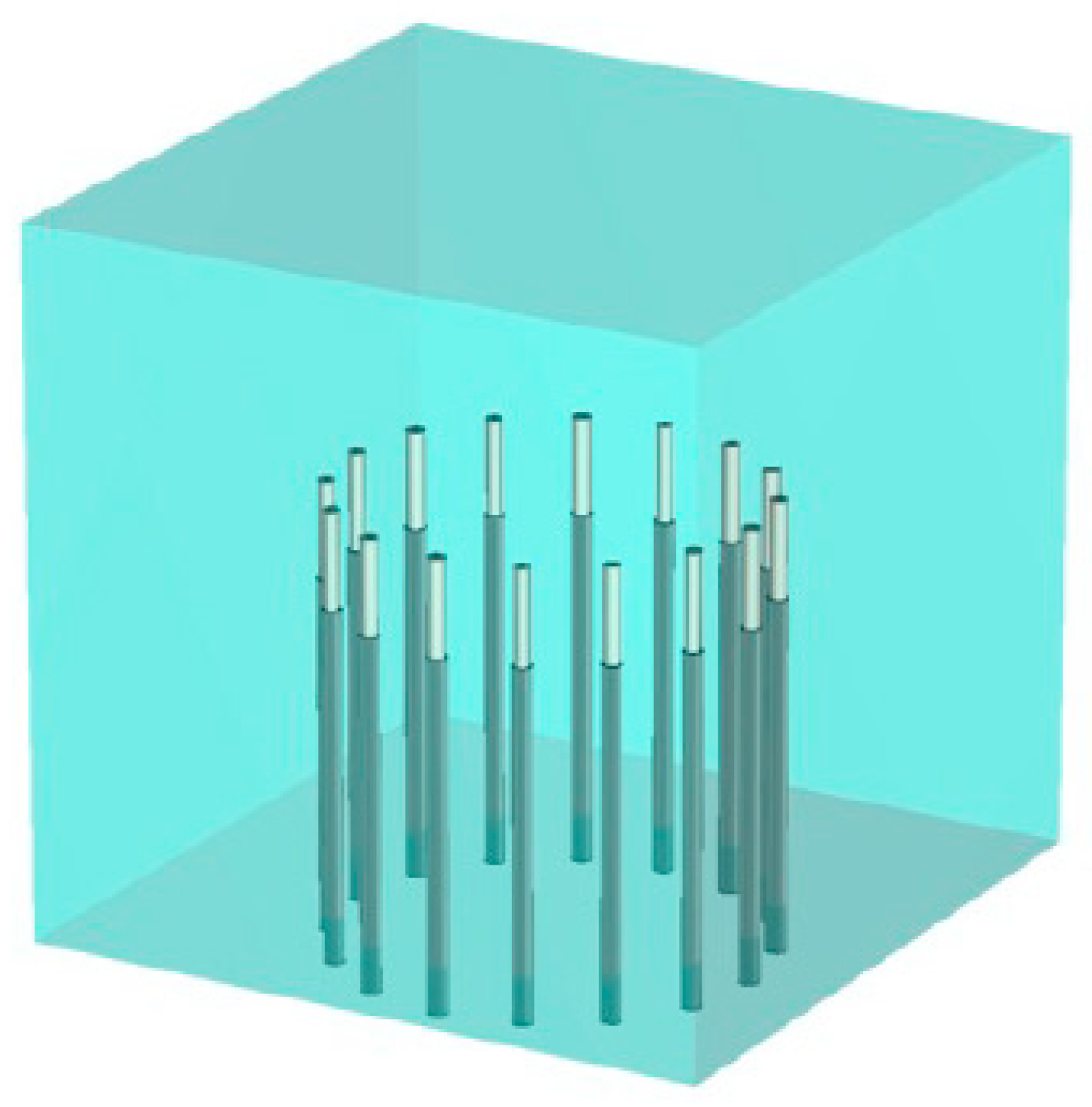
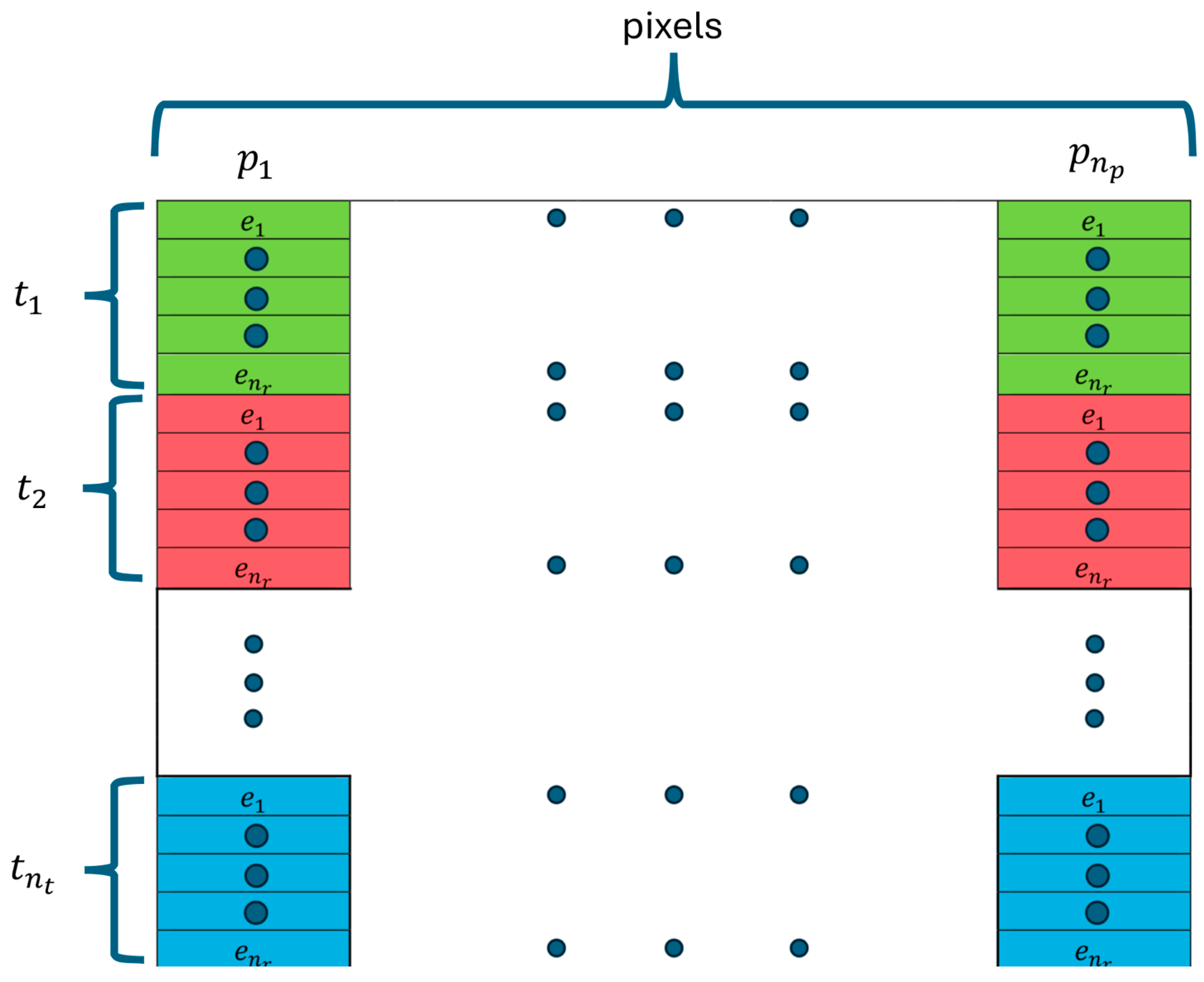
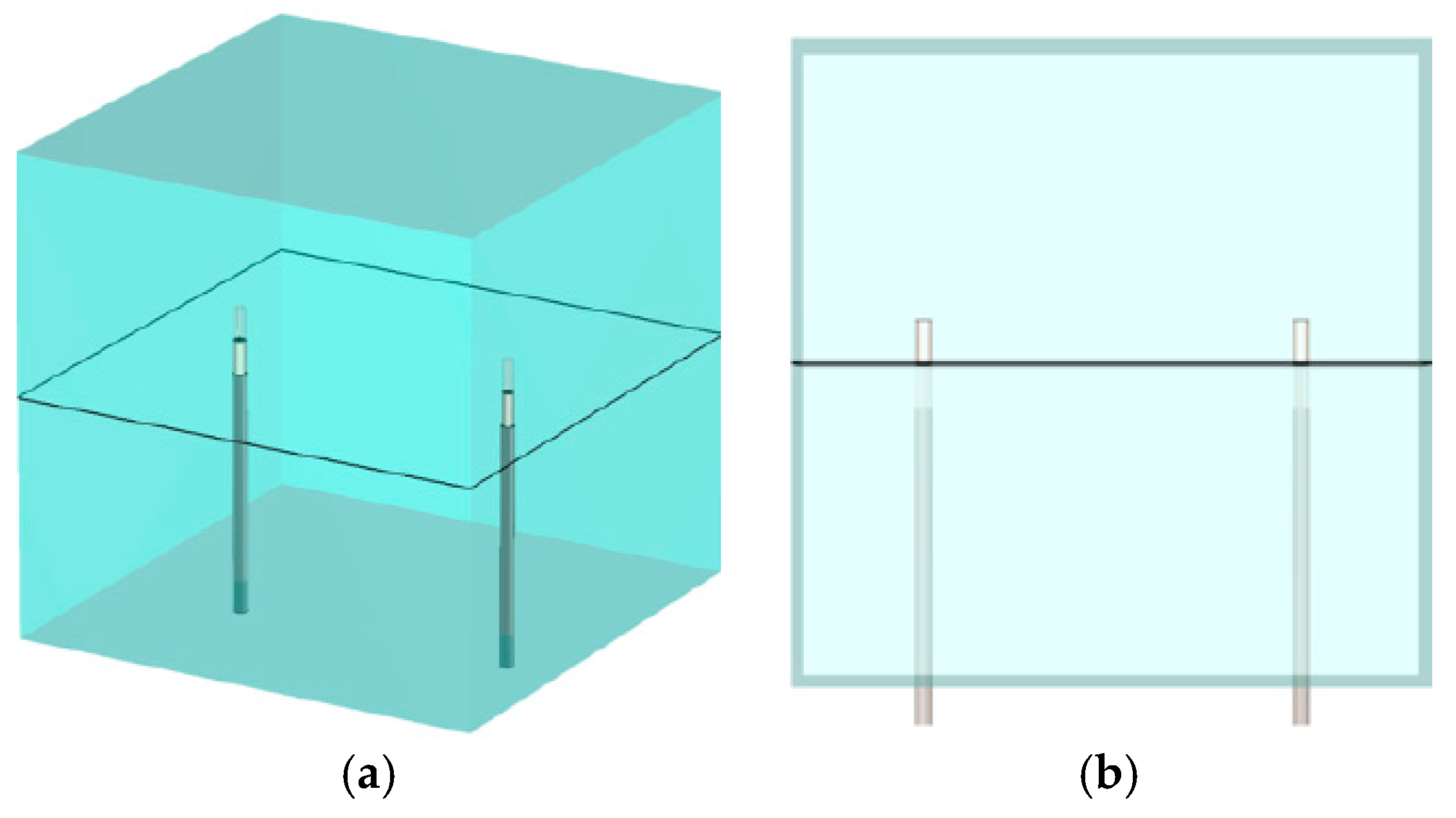

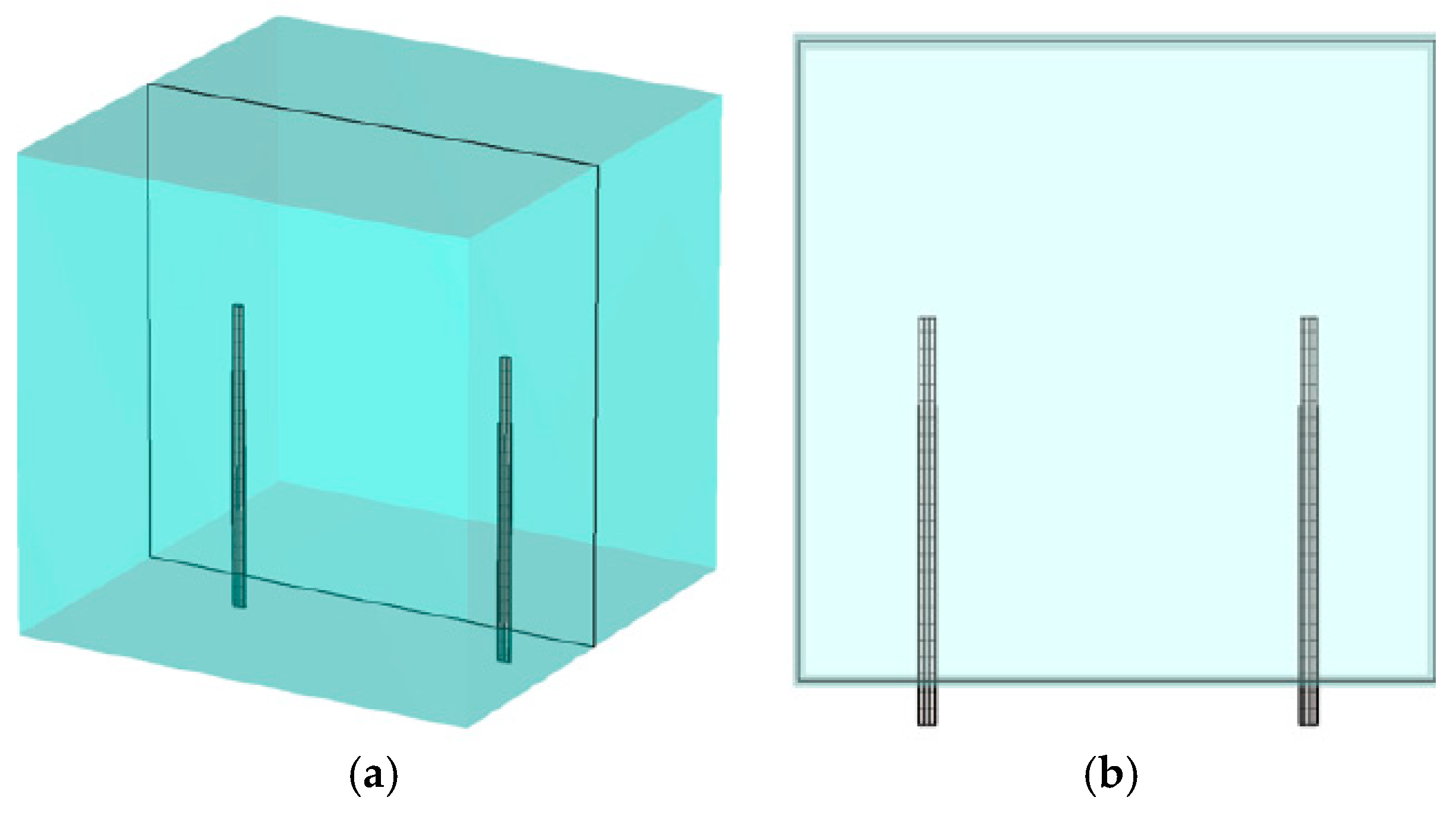

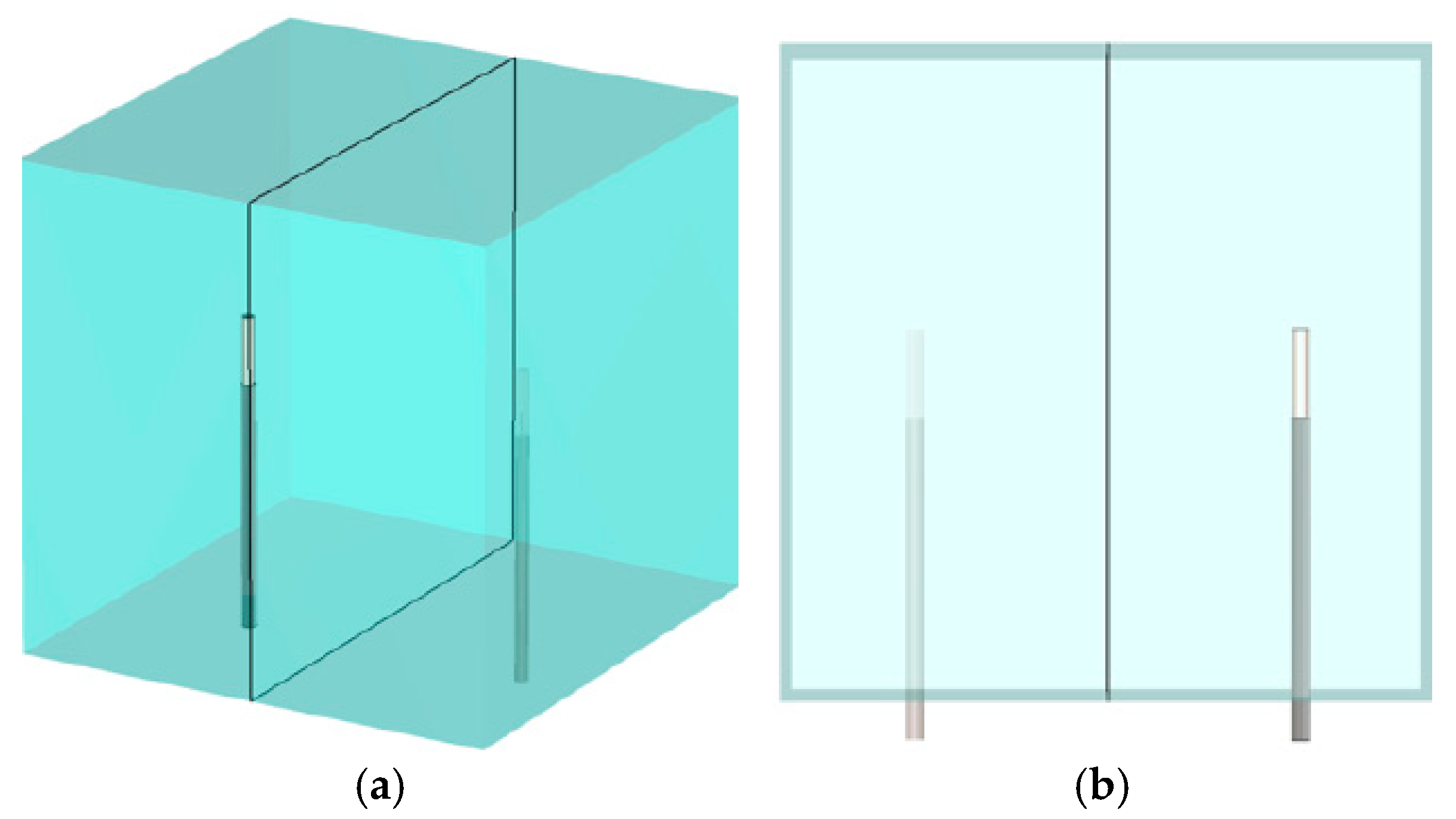

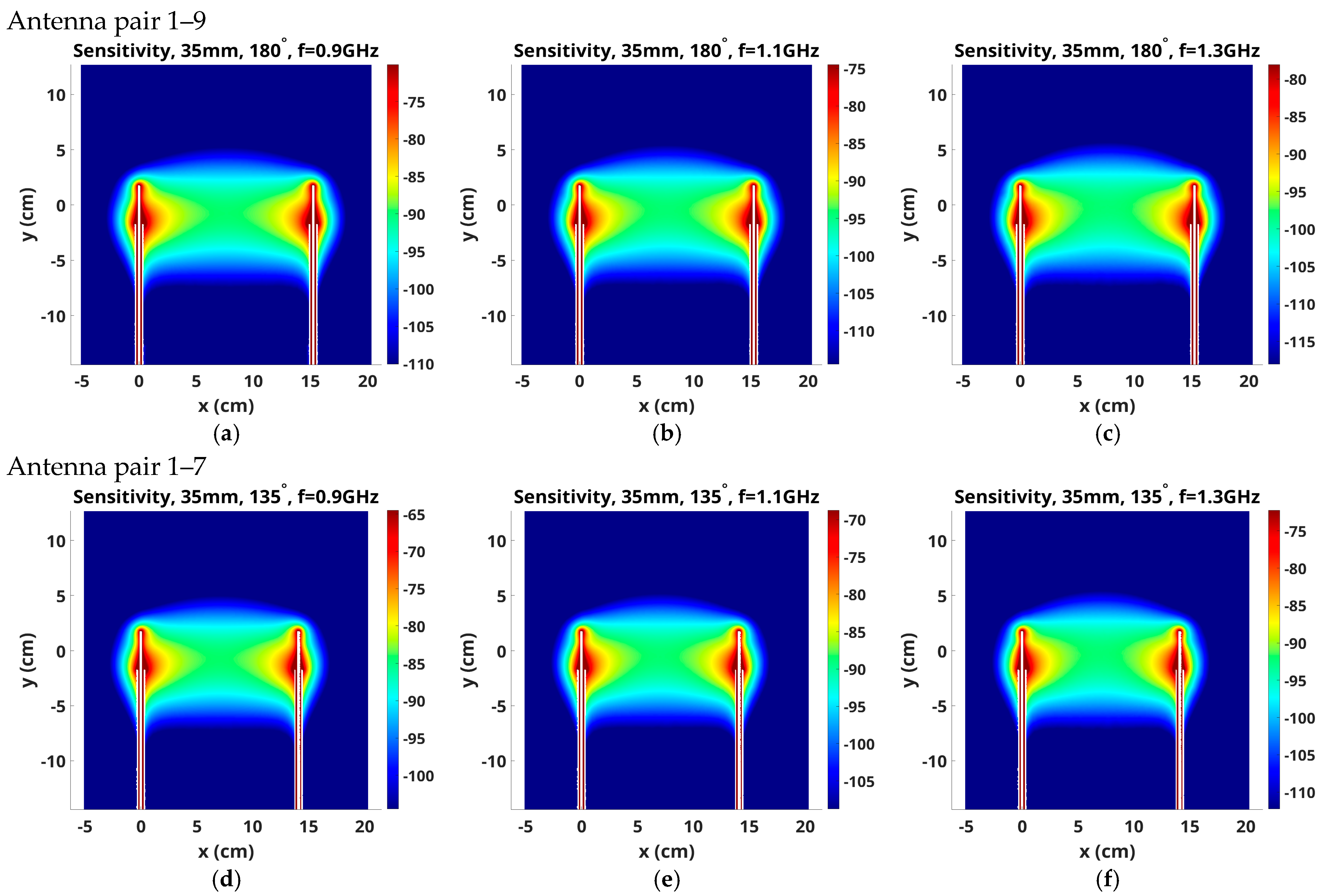
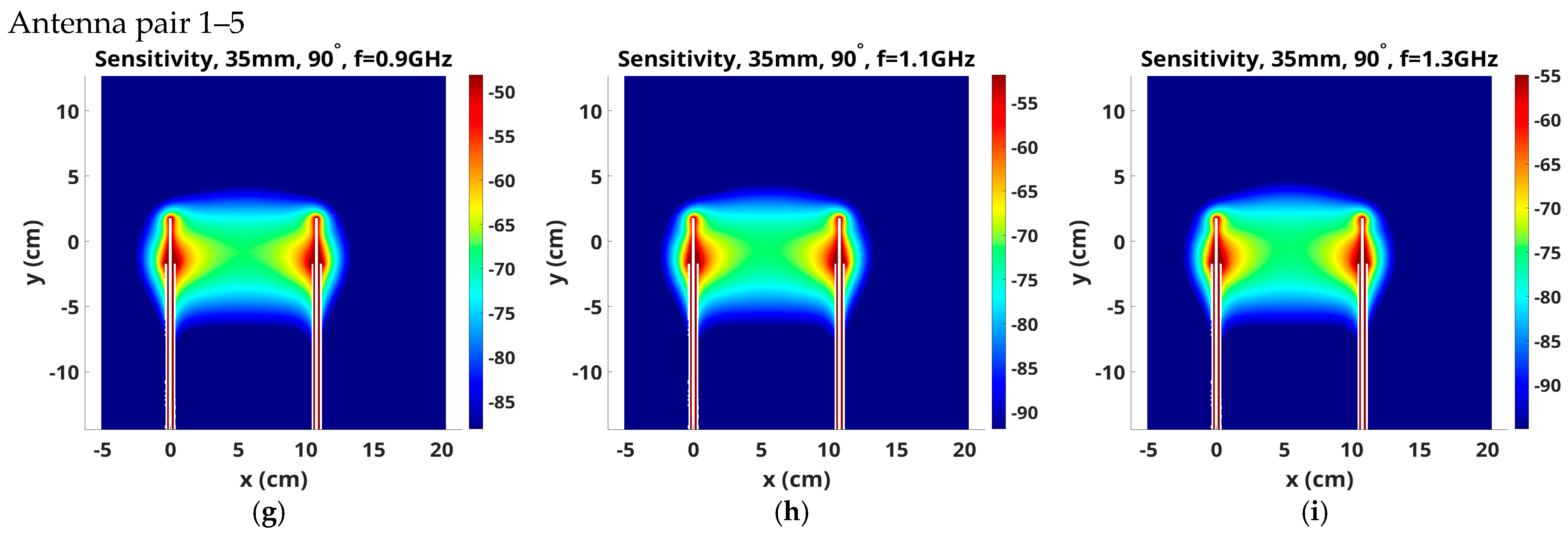
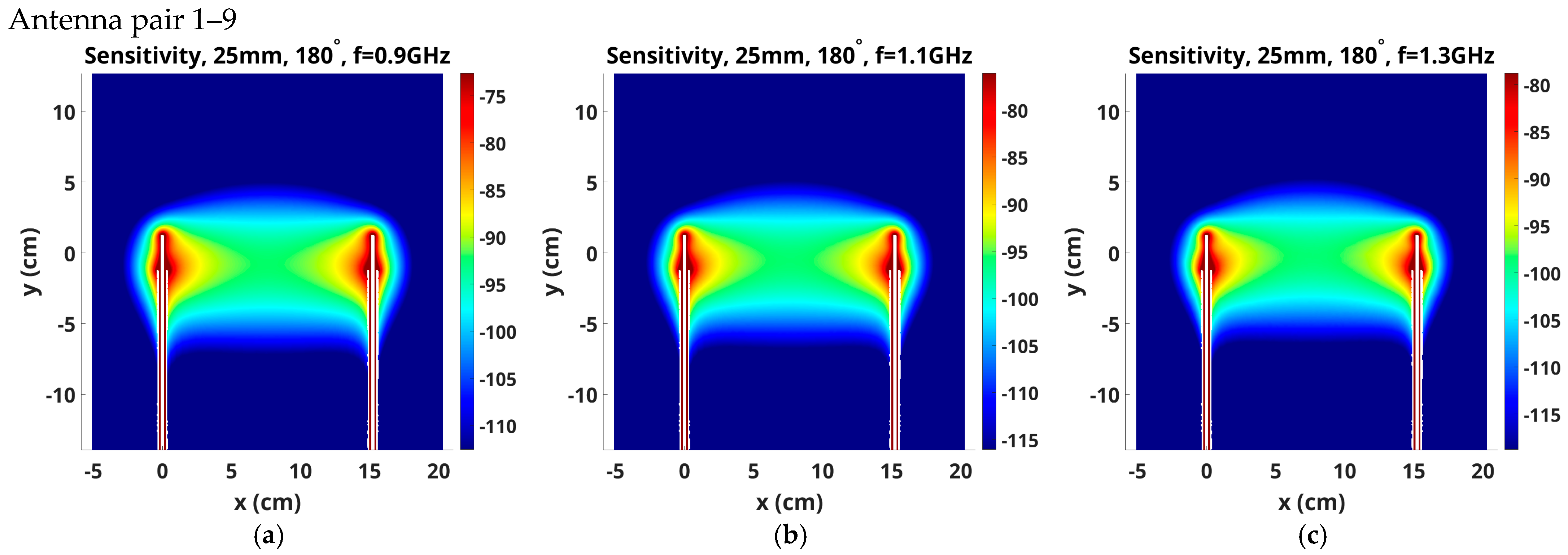
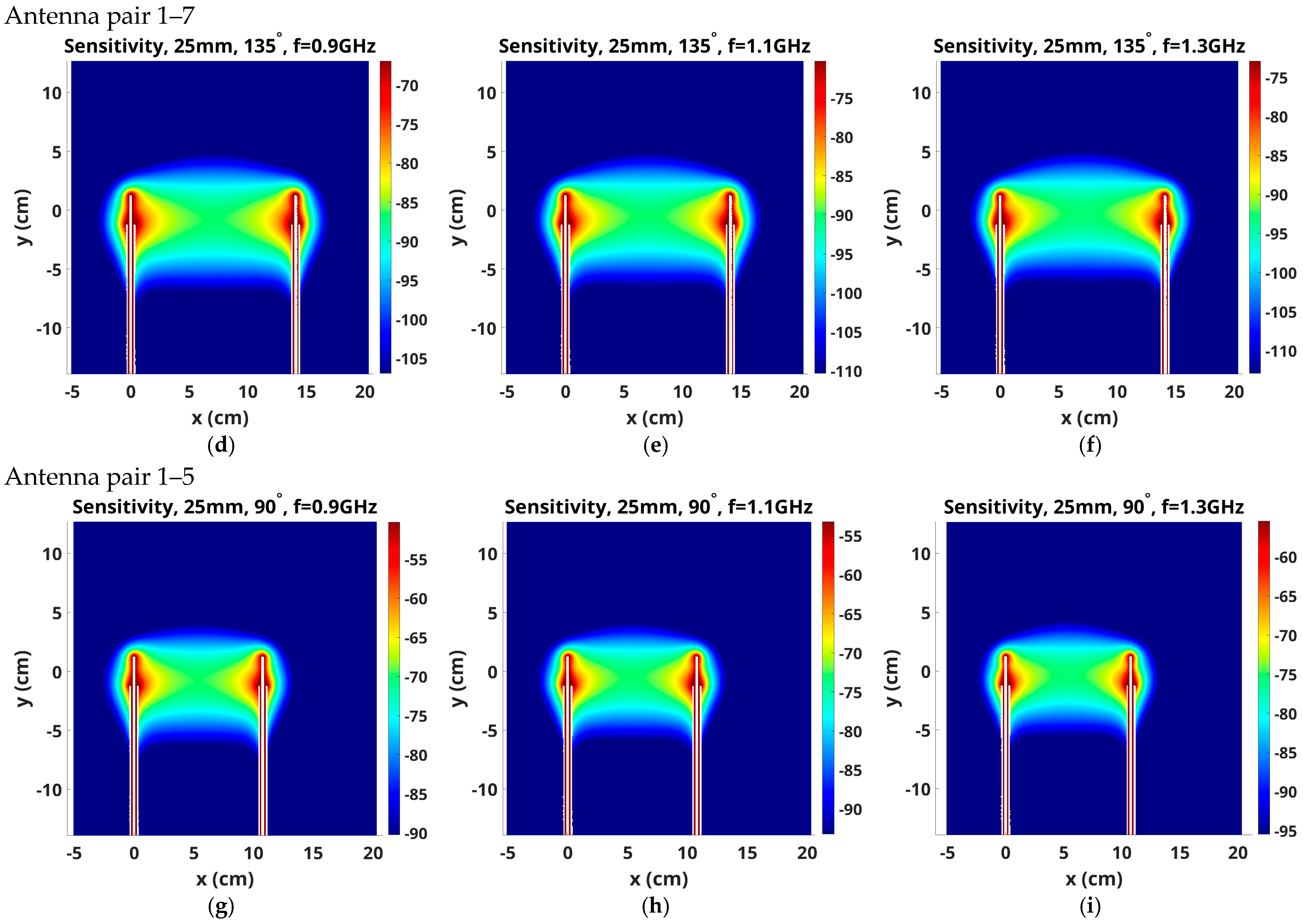

Disclaimer/Publisher’s Note: The statements, opinions and data contained in all publications are solely those of the individual author(s) and contributor(s) and not of MDPI and/or the editor(s). MDPI and/or the editor(s) disclaim responsibility for any injury to people or property resulting from any ideas, methods, instructions or products referred to in the content. |
© 2025 by the authors. Licensee MDPI, Basel, Switzerland. This article is an open access article distributed under the terms and conditions of the Creative Commons Attribution (CC BY) license (https://creativecommons.org/licenses/by/4.0/).
Share and Cite
Meaney, P.; Kordiboroujeni, Z.; Paulsen, K. 3D Sensitivity Zone Mapping in a Multi-Static, Microwave Breast Imaging Configuration. Sensors 2025, 25, 5150. https://doi.org/10.3390/s25165150
Meaney P, Kordiboroujeni Z, Paulsen K. 3D Sensitivity Zone Mapping in a Multi-Static, Microwave Breast Imaging Configuration. Sensors. 2025; 25(16):5150. https://doi.org/10.3390/s25165150
Chicago/Turabian StyleMeaney, Paul, Zamzam Kordiboroujeni, and Keith Paulsen. 2025. "3D Sensitivity Zone Mapping in a Multi-Static, Microwave Breast Imaging Configuration" Sensors 25, no. 16: 5150. https://doi.org/10.3390/s25165150
APA StyleMeaney, P., Kordiboroujeni, Z., & Paulsen, K. (2025). 3D Sensitivity Zone Mapping in a Multi-Static, Microwave Breast Imaging Configuration. Sensors, 25(16), 5150. https://doi.org/10.3390/s25165150





